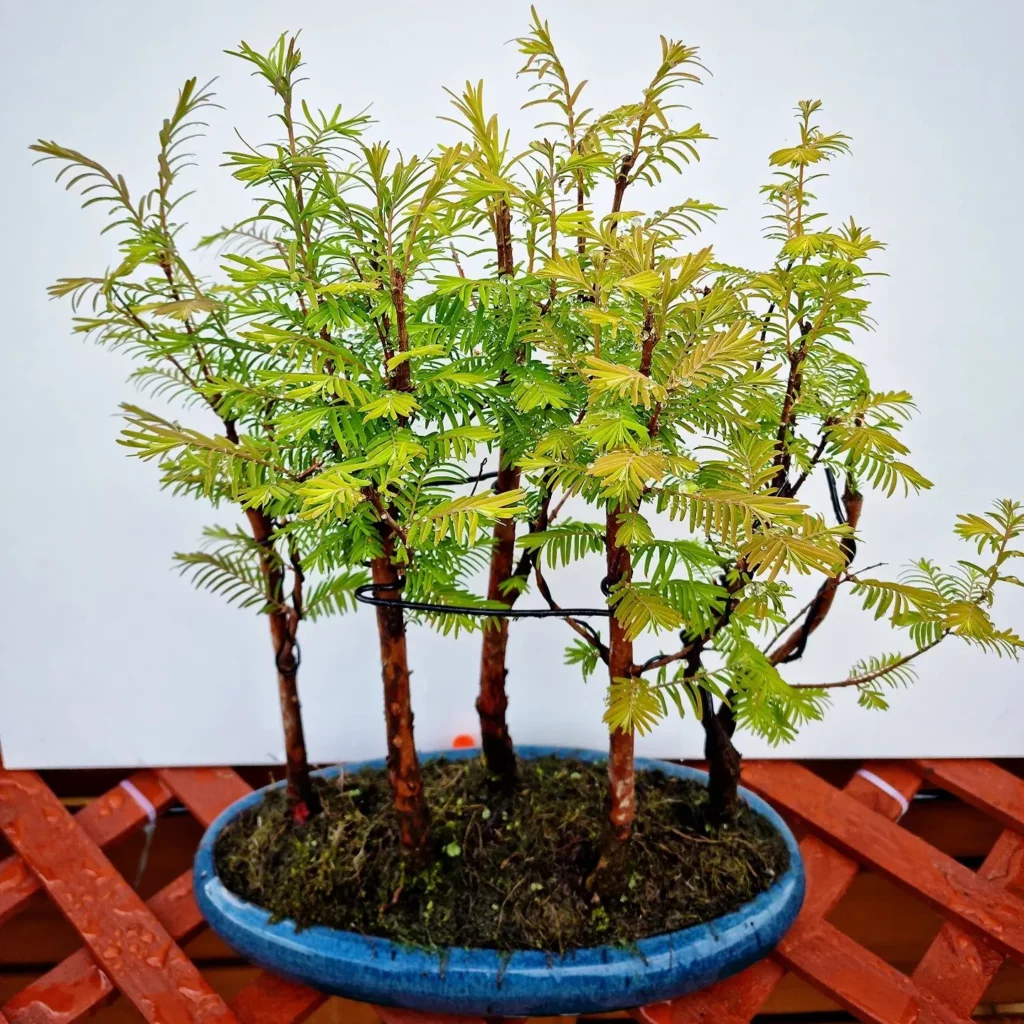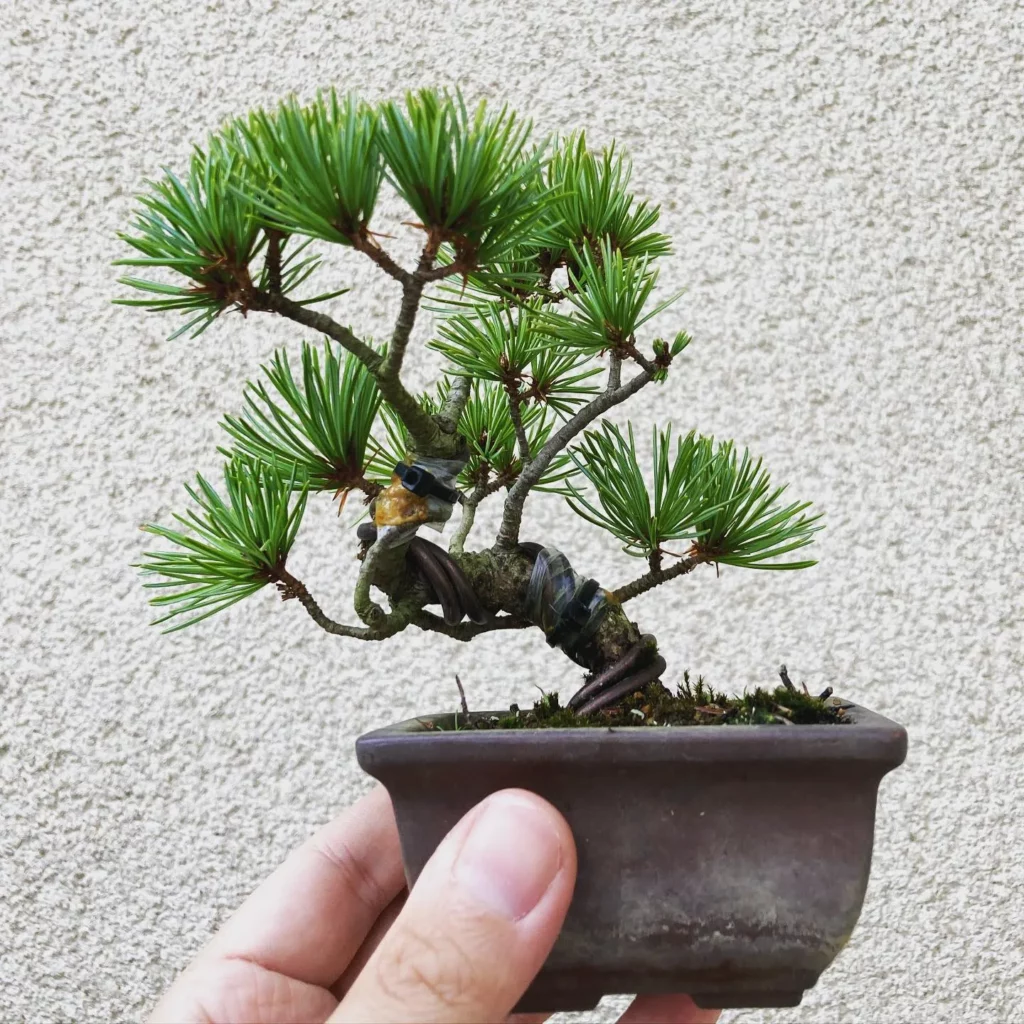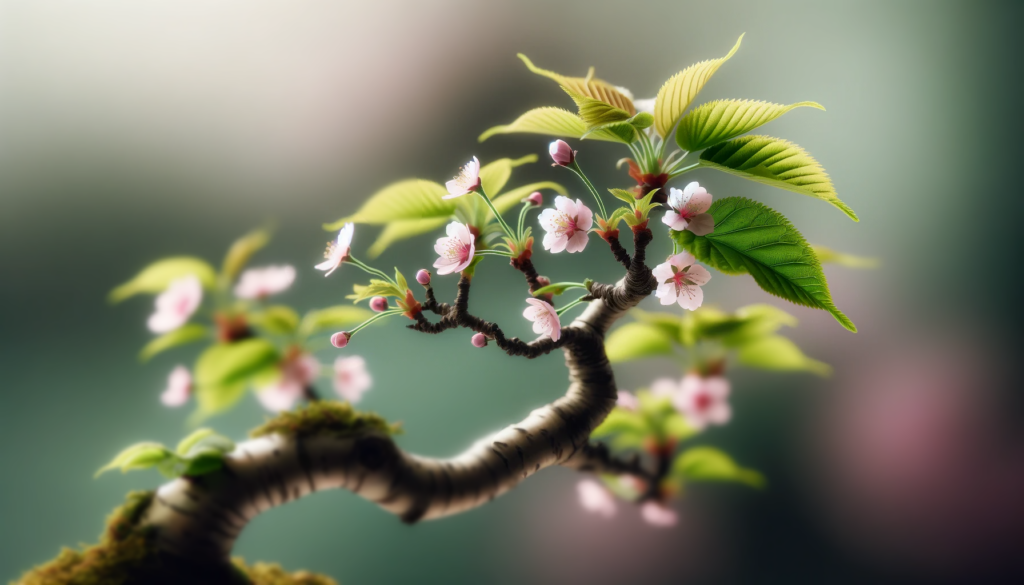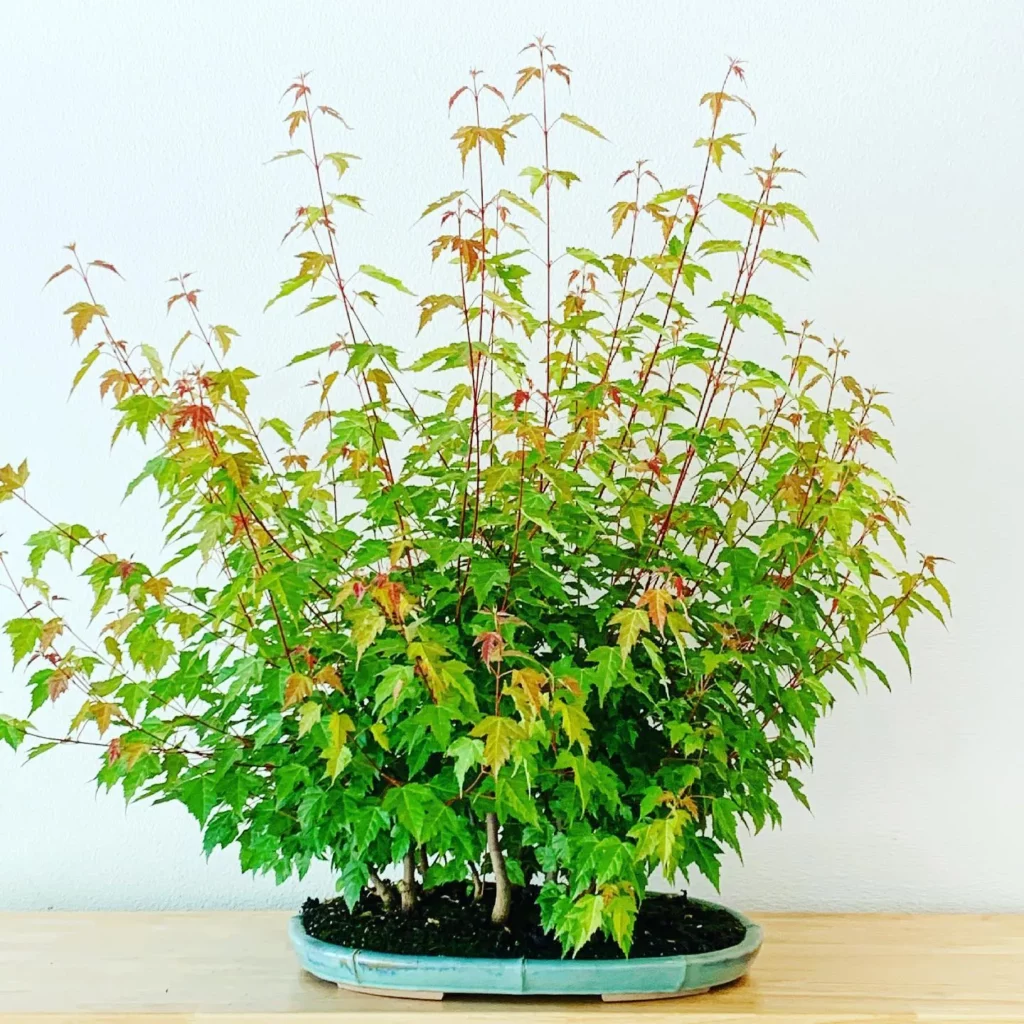Water bonsai trees with moderation, ensuring the soil is slightly moist but not waterlogged, and consider the specific needs of the tree species.
As an expert in the art of bonsai, I understand the critical role that watering plays in ensuring the health and growth of bonsai trees. Proper watering techniques are essential for maintaining optimal moisture levels and preventing issues such as root rot or dehydration.
In this section, I will provide you with valuable insights and tips on watering bonsai trees, helping you nurture your miniature masterpieces with care and expertise.
No products found.
Key Takeaways:
- Understanding the watering needs of your specific bonsai tree is crucial for success.
- Factors such as tree species, pot size, soil type, climate, and season influence the frequency and amount of water required.
- Overwatering can lead to root rot, while underwatering can cause wilting and leaf damage.
- Top watering and bottom watering are the two main methods, with top watering being suitable for most small to medium-sized bonsai trees.
- Hand watering allows for closer monitoring of soil moisture levels, while drip irrigation systems can be efficient and time-saving.
Understanding the Watering Needs of Bonsai Trees



To water bonsai trees effectively, it is essential to understand their specific watering requirements based on various factors. The watering needs of bonsai trees can vary depending on the species, size of the pot, soil type, climate, and season.
First, let’s consider the species of your bonsai tree. Different species have different water requirements. Some trees prefer consistently moist soil, while others prefer a slightly drier environment.
Research the specific needs of your bonsai tree species to determine the ideal watering regimen.
The size of the pot also plays a crucial role in watering. Bonsai trees in smaller pots tend to dry out more quickly and require more frequent watering compared to those in larger pots.
No products found.
Additionally, the type of soil used will influence water retention. Well-draining soil will prevent waterlogging and ensure proper moisture levels.
Climate and season are important factors to consider as well. Bonsai trees in hot and dry climates will require more frequent watering, while those in cooler or humid climates may require less.
During the summer months, you may need to water your bonsai trees more often to compensate for increased evaporation, while in winter, you might need to reduce watering frequency to prevent overwatering and freezing of the roots.
| Factors to Consider | Watering Frequency |
|---|---|
| Tree species | Varies based on species |
| Pot size | Smaller pots require more frequent watering |
| Soil type | Well-draining soil retains moisture without waterlogging |
| Climate | Hot and dry climates require more frequent watering |
| Season | Adjust watering frequency based on evaporation rates |
Significance of Watering Frequency for Bonsai
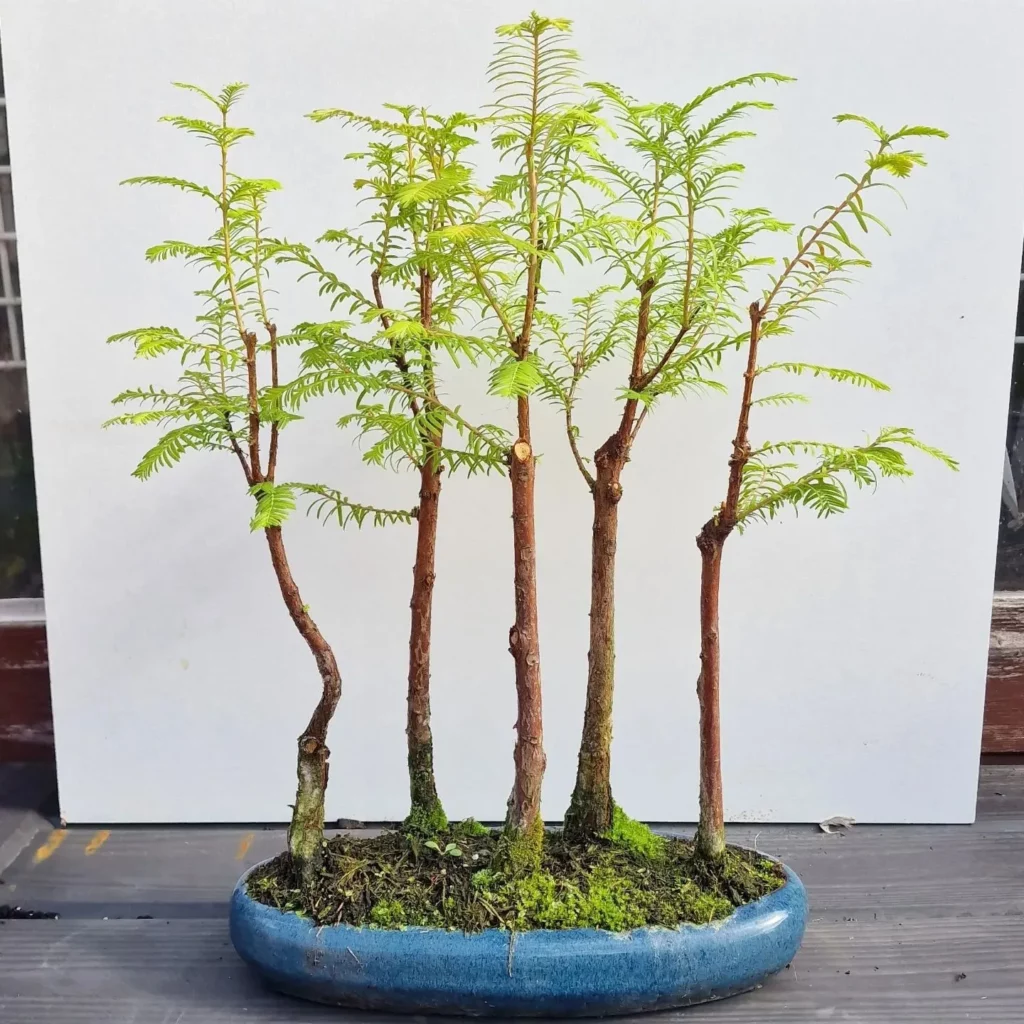
Finding the correct watering frequency is crucial for maintaining the health and vitality of bonsai trees. The frequency at which you water your bonsai depends on several factors, including the species of the tree, pot size, soil type, climate, and season.
Each of these factors plays a role in determining how quickly the soil dries out, and therefore, how often you should water your bonsai.
No products found.
Overwatering is a common mistake made by bonsai enthusiasts, and it can have detrimental effects on the tree’s overall health. When the soil is kept consistently wet, the roots can become waterlogged, leading to root rot and other root-related diseases.
On the other hand, underwatering can cause the tree to suffer from dehydration, resulting in wilting, yellowing leaves, and stunted growth.
To avoid these issues, it’s important to strike a balance and find the right watering frequency for your specific bonsai. One effective method is to use the finger test. Insert your finger into the soil up to the second knuckle.
If the soil feels dry at that depth, it’s time to water the bonsai. However, if the soil feels moist, it’s best to wait a little longer before watering.
| Watering Frequency Guidelines | Factors Affecting Watering Frequency |
|---|---|
| 1. Water bonsai when the soil feels dry at a depth of up to the second knuckle. | 1. Species of the bonsai tree |
| 2. Adjust watering frequency based on the climate and season. | 2. Pot size and material |
| 3. Monitor the bonsai’s reaction to watering, such as wilting or yellowing leaves. | 3. Soil type and drainage |
| 4. Avoid watering too frequently or letting the soil completely dry out. | 4. Environmental factors, such as humidity and sunlight |
No products found.
Additional Tips for Watering Bonsai
- Use a watering can with a fine nozzle or a spray bottle to distribute water evenly across the soil surface.
- Avoid splashing water directly onto the foliage of the bonsai, as this can lead to fungal diseases.
- Consider investing in a humidity tray or misting the tree’s foliage to increase humidity levels, especially in dry environments.
- Monitor your bonsai regularly for any signs of water stress or excessive moisture, and make adjustments to your watering routine as needed.
Top Watering vs. Bottom Watering

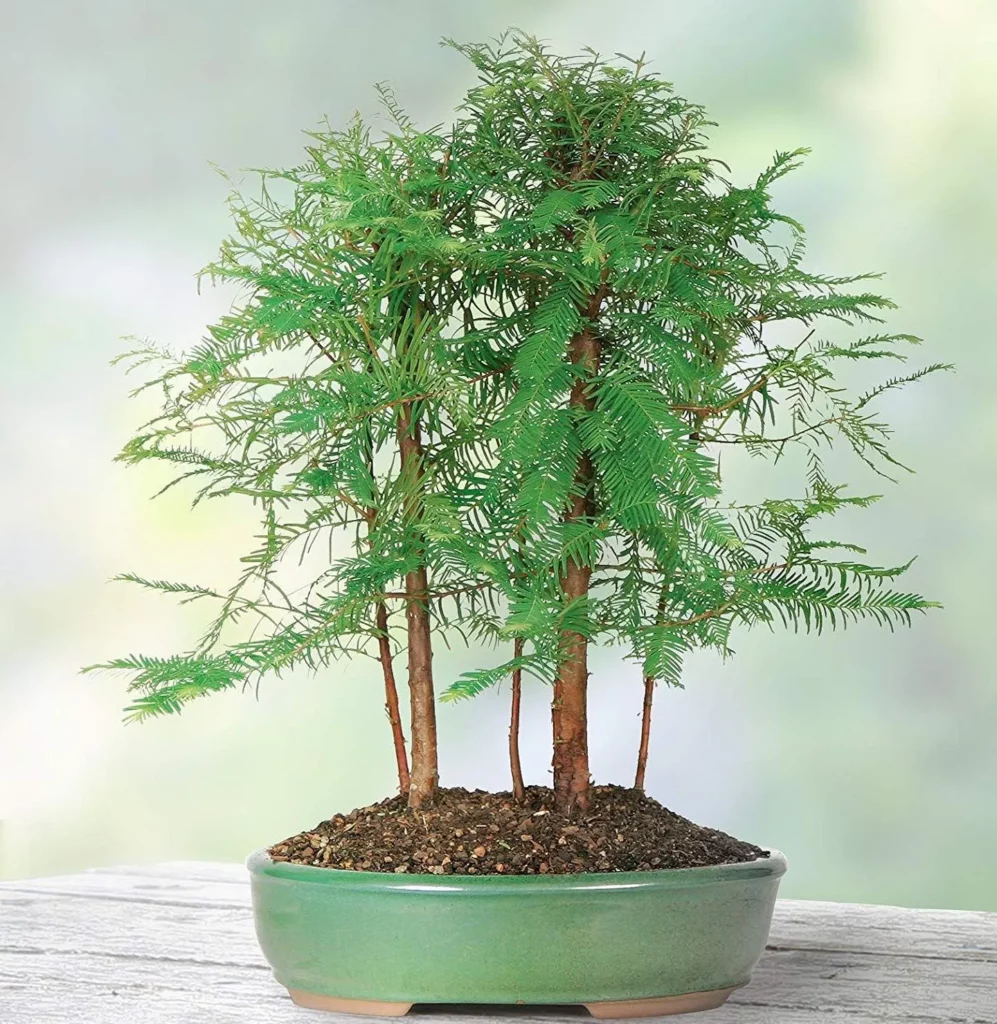
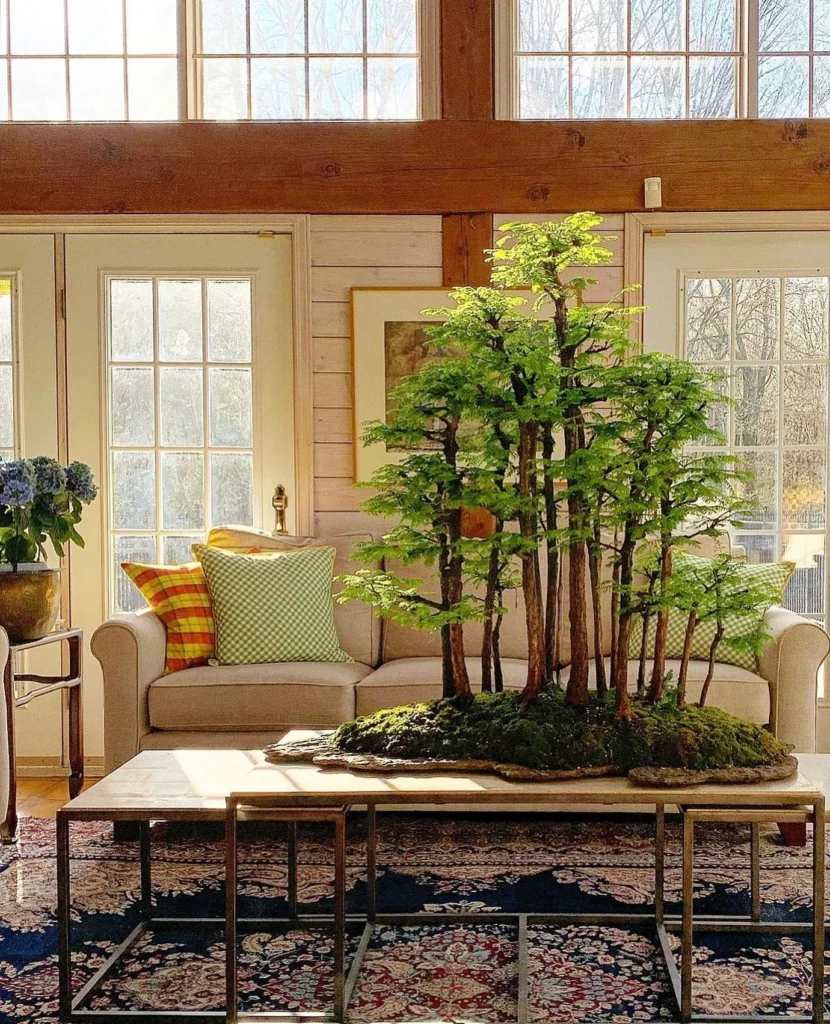
When it comes to watering bonsai trees, you have two primary options: top watering or bottom watering. Both methods have their advantages and considerations, so it’s essential to understand which one is more suitable for your specific bonsai tree.
Top watering involves pouring water directly onto the surface of the soil, allowing it to soak through and hydrate the roots. This method is ideal for small to medium-sized bonsai trees and allows for easy observation of water absorption.
It mimics rainfall and provides a thorough hydration to the entire root system.
Bottom watering, on the other hand, involves placing the pot in a tray filled with water and allowing the roots to absorb moisture through the drainage holes. This method is especially useful for larger bonsai trees or those with delicate foliage that may be susceptible to water damage.
Bottom watering ensures that water reaches deeper roots, promoting better root development.
Both top watering and bottom watering have their pros and cons. Top watering is more convenient, mimics natural rainfall, and allows for better monitoring of soil moisture levels.
However, it can increase the risk of overwatering and may not distribute water evenly throughout the root system. On the other hand, bottom watering provides a more controlled and consistent moisture level, but it requires careful observation to prevent waterlogging and the accumulation of stagnant water.
No products found.
Pros and Cons of Top Watering and Bottom Watering
| Method | Pros | Cons |
|---|---|---|
| Top Watering | Convenient and mimics natural rainfall Allows for better monitoring of soil moisture levels | Increased risk of overwatering Uneven water distribution |
| Bottom Watering | Provides a controlled and consistent moisture level Reaches deeper roots | Requires careful observation to prevent waterlogging Risk of stagnant water accumulation |
Hand Watering Techniques for Bonsai Trees
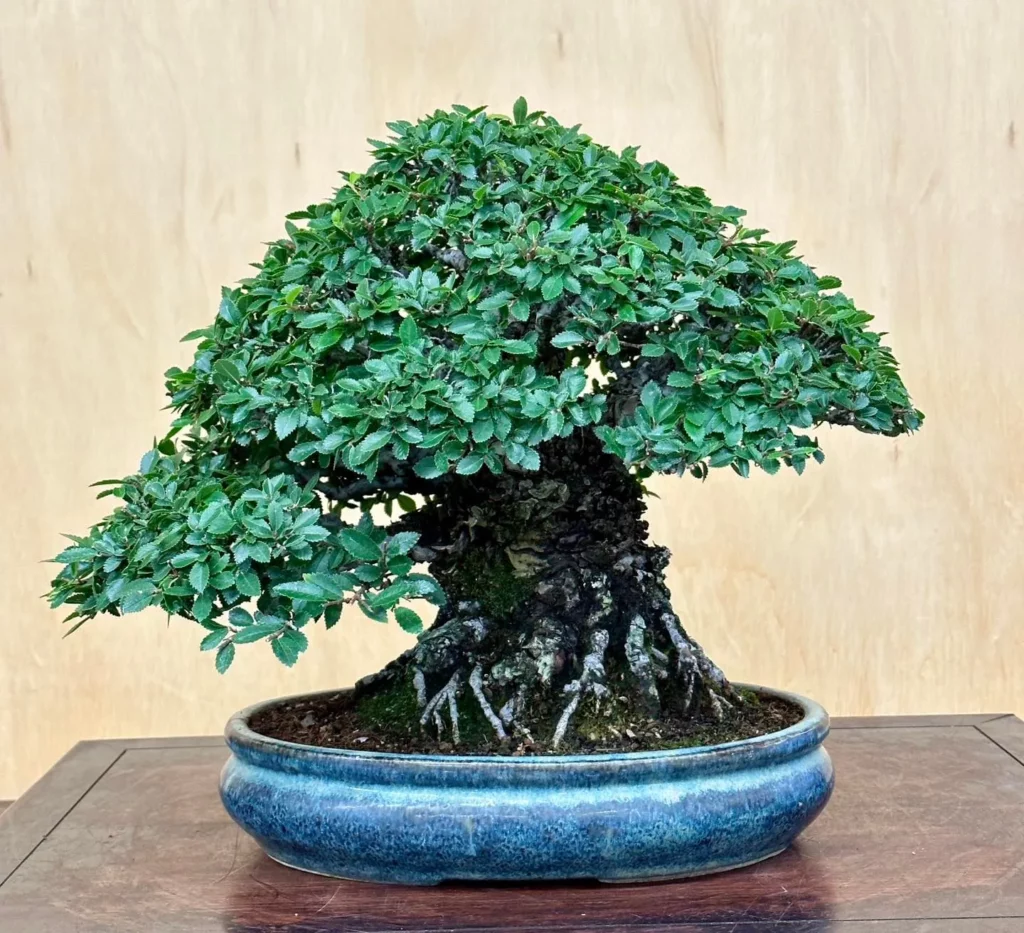
Hand watering is an excellent technique for bonsai enthusiasts who prefer a more hands-on approach to caring for their trees. It allows for a closer connection with your bonsai and enables you to monitor the moisture levels of the soil more effectively.
Here are some tips and techniques to ensure proper hydration for your bonsai:
- Use a watering can with a narrow spout to have better control over the water flow. This will help you avoid overwatering or splashing water onto the leaves, which can lead to fungal diseases.
- Water your bonsai thoroughly until the water drains out from the drainage holes at the bottom of the pot. This ensures that the entire root system receives adequate moisture.
- For small to medium-sized bonsai trees, water the soil evenly from the top until the water starts to drain. Allow the soil to dry out slightly between waterings to prevent root rot.
- For larger bonsai trees, it may be beneficial to water the pot from different angles to ensure the water reaches all parts of the root system.
- Take note of the specific watering needs of your bonsai tree species, as some may require more frequent watering than others. Research and familiarize yourself with the specific moisture requirements of your tree.
- Consider using a moisture meter to accurately monitor the moisture levels of the soil. This can help you determine when it’s time to water your bonsai.
No products found.
Tips for Hand Watering Bonsai Trees
To further enhance your hand watering technique, here are some additional tips:
- Water your bonsai in the early morning or late afternoon to minimize moisture loss through evaporation.
- Take note of the weather conditions to adjust your watering schedule accordingly. Hot and dry days may require more frequent watering, while cooler and humid days may necessitate less frequent watering.
- Be mindful of the type of potting soil used for your bonsai. Some soils retain more moisture than others, so adjust your watering frequency accordingly.
- Regularly inspect the foliage and soil of your bonsai for any signs of overwatering or underwatering. Overwatering can lead to yellowing leaves or root rot, while underwatering may cause wilting or dryness.
- Consider placing a humidity tray filled with water beneath your bonsai to increase humidity levels around the tree. This can help prevent the soil from drying out too quickly.
Efficient Drip Irrigation Systems for Bonsai



For those seeking a more automated and efficient approach to watering their bonsai trees, drip irrigation systems can be a great option. These systems deliver water directly to the roots, ensuring consistent moisture levels while minimizing water waste.
Drip irrigation works by using a series of tubes and emitters to gradually release water near the base of each bonsai tree. This method allows for precise control over the amount and frequency of water delivered, which is especially beneficial for those with a busy schedule or multiple bonsai trees to care for.
- Drip irrigation helps prevent overwatering by slowly supplying water to the roots, allowing the soil to absorb it at a manageable rate. This can help prevent waterlogged soil and root rot.
- It also reduces the risk of underwatering, as the system can be programmed to provide water for a specific duration and frequency, ensuring the trees receive the necessary hydration.
- Additionally, drip irrigation conserves water by targeting the root zone specifically, reducing evaporative loss and minimizing runoff.
No products found.
Investing in a drip irrigation system for your bonsai trees can save you time and effort while promoting healthier growth. With the ability to customize watering schedules and durations, as well as the convenience of automated watering, you can ensure that your bonsai trees receive the right amount of water without the risk of human error.
| Advantages of Drip Irrigation Systems for Bonsai |
|---|
| 1. Precise water delivery directly to the root zone |
| 2. Reduce the risk of overwatering and underwatering |
| 3. Conserves water through targeted watering |
| 4. Customizable watering schedules and durations |
Choosing the Right Water for Bonsai Trees

The choice of water for your bonsai trees can significantly impact their overall health and well-being. When it comes to watering your bonsai, there are a few options to consider – tap water, filtered water, and rainwater.
Tap water is the most readily available option for many bonsai enthusiasts. However, it’s important to note that tap water may contain chemicals such as chlorine and fluoride, which can be harmful to the delicate roots of bonsai trees.
To mitigate this, you can let tap water sit out for 24 hours to allow the chlorine to evaporate. However, it may not remove other impurities present in tap water.
No products found.
Filtered water is another option to consider. By using a water filtration system or water filter pitcher, you can remove impurities and chemicals from the water, ensuring that your bonsai trees are not exposed to potentially harmful substances.
Filtered water provides a cleaner and safer option for watering your bonsai trees.
Rainwater is often regarded as the best choice for watering bonsai trees. Rainwater is free from minerals and chemicals, making it a natural and nourishing option. Collect rainwater in a clean container and use it to water your bonsai trees.
However, be mindful of the climate and season as rainwater may not be readily available year-round.
| Type of Water | Pros | Cons |
|---|---|---|
| Tap Water | Readily available | May contain chemicals harmful to roots |
| Filtered Water | Removes impurities and chemicals | Additional cost for filtration system |
| Rainwater | Natural and free from minerals and chemicals | Availability dependent on climate and season |
References:
- Smith, J. (2022). The Art of Bonsai: A Complete Guide to Growing and Caring for Bonsai Trees. New York: Rockridge Press.
- Gordon, A. (2021). Bonsai: The Ultimate Guide for Beginners to Growing, Shaping, and Caring for Bonsai Trees. New York: Independently published.
Watering Bonsai Trees in Winter
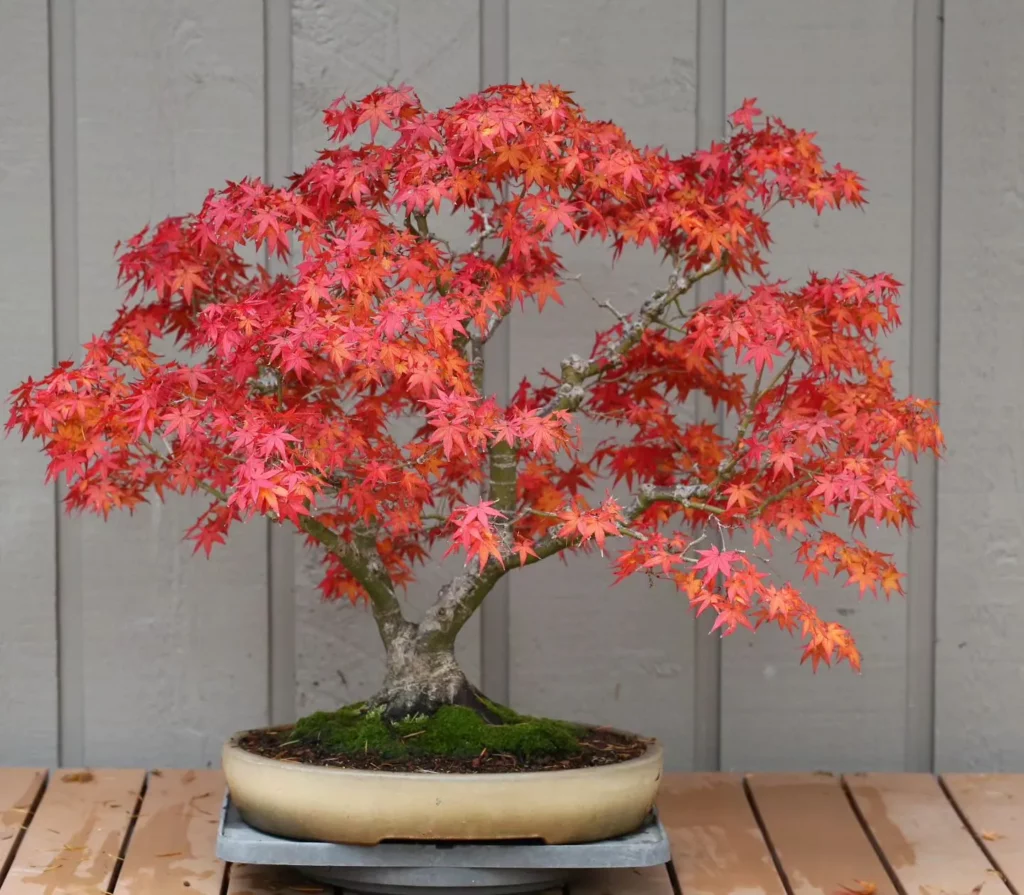
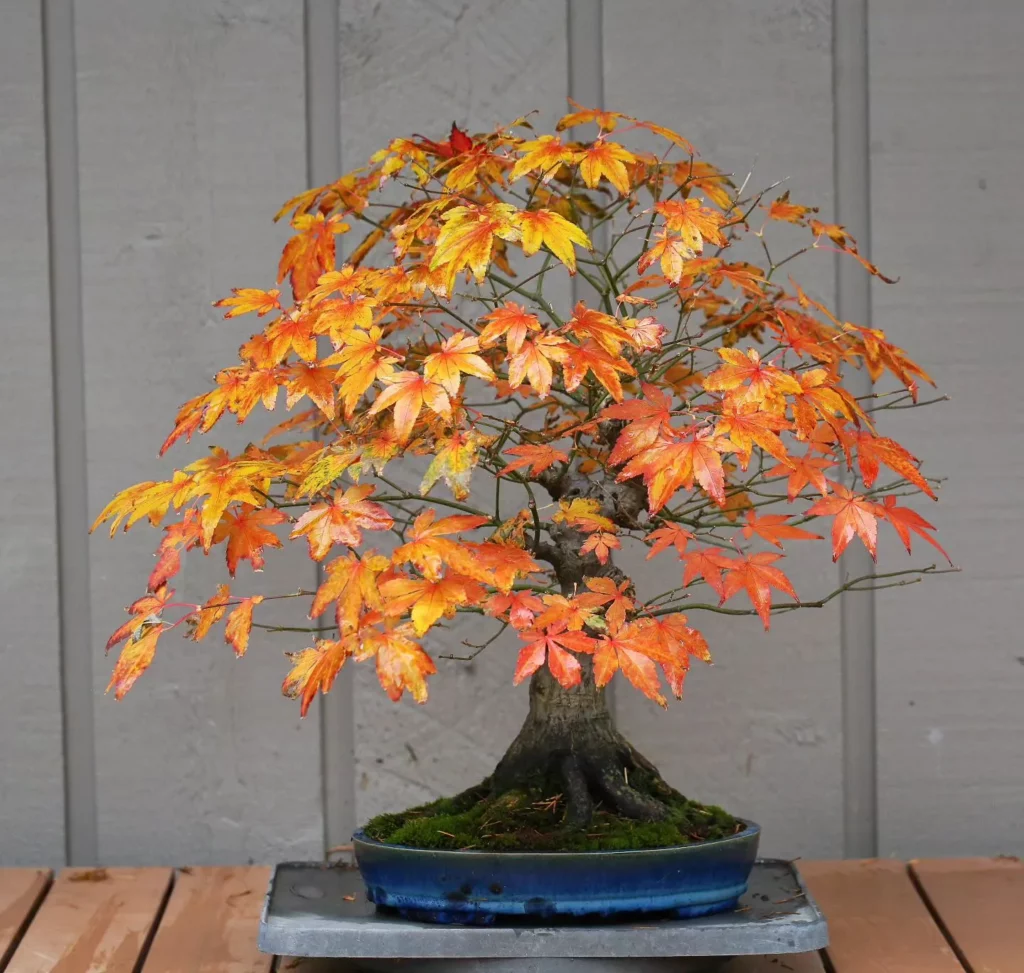
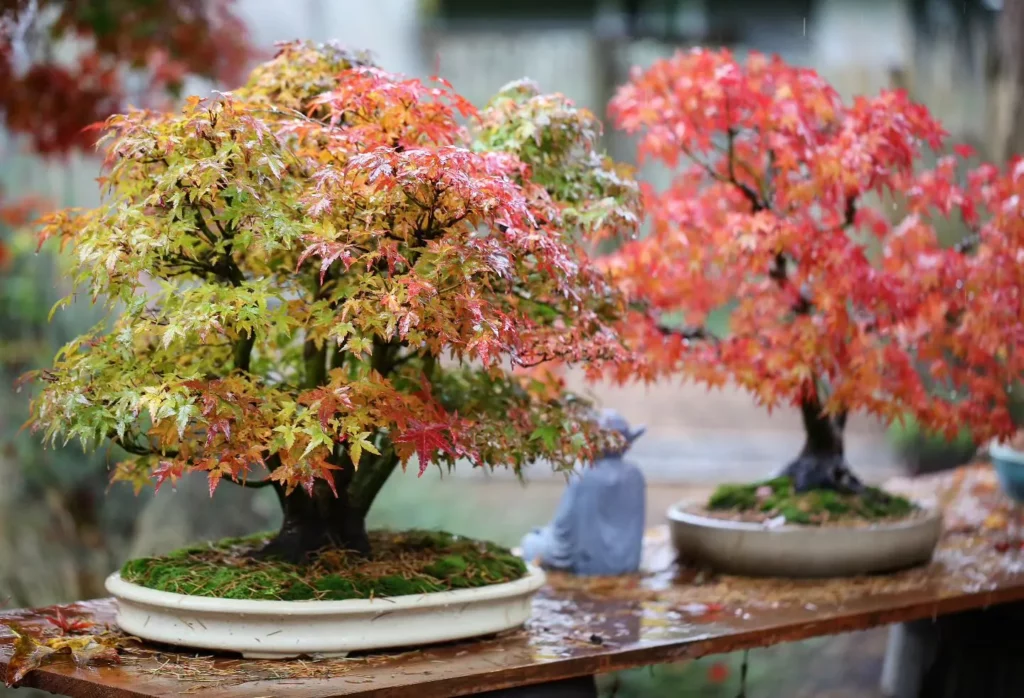
Winter brings unique challenges when it comes to watering bonsai trees, requiring special care to ensure their survival during the colder months. The lower temperatures and reduced sunlight can result in slower growth and increased risk of root damage. Understanding the watering needs of your bonsai tree during winter is crucial for maintaining its health.
During winter, it’s important to adjust your watering routine to account for the reduced metabolic activity of the tree. The frequency of watering will decrease compared to the warmer months, as the tree’s water requirements decrease. However, it’s essential to monitor the moisture levels in the soil to prevent the tree from drying out completely.
One effective technique for watering bonsai trees during winter is the “stick test.” Insert a wooden stick into the soil and check for moisture. If the stick comes out damp, it indicates that the soil still contains adequate moisture. However, if it comes out dry, it’s time to water your bonsai. Be careful not to overwater, as waterlogged soil can damage the roots.
Another important consideration during winter is the temperature of the water used for watering. Using cold water straight from the tap can shock the roots of the bonsai tree, leading to stress and potential damage. To avoid this, allow the water to reach room temperature before watering. You can collect rainwater and store it indoors to ensure it is at the right temperature.
Signs of Overwatering and Underwatering Bonsai
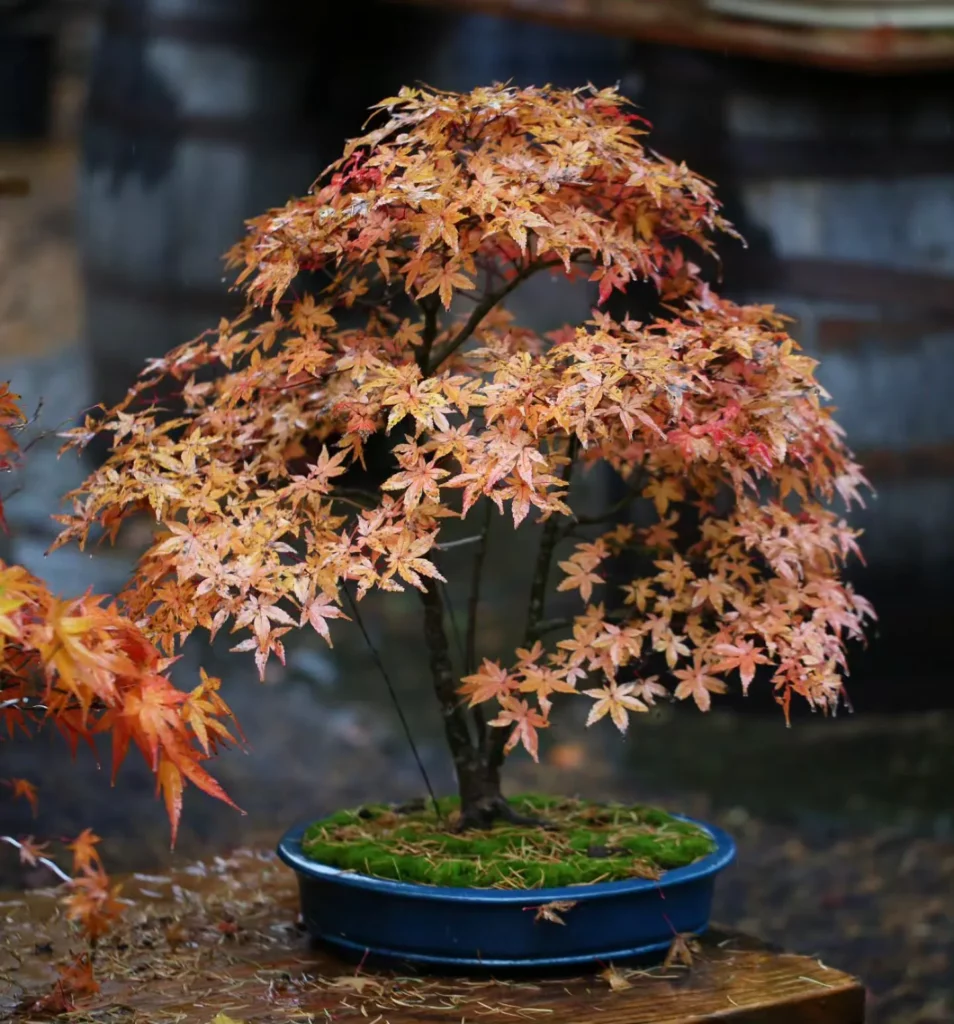
Recognizing the signs of overwatering or underwatering in bonsai trees is essential in maintaining their overall health and preventing potential issues. Both scenarios can have detrimental effects on the tree, making it crucial to monitor and adjust watering practices accordingly.
Signs of overwatering:
- Yellowing or browning of leaves that may fall off easily
- Soft and mushy roots
- Foul odor emanating from the soil
- The soil remains excessively wet and does not dry out between waterings
Signs of underwatering:
- Wilting and drooping leaves that lose their firmness
- Dry and brittle roots
- Soil that dries out quickly and needs frequent watering
- Leaf edges turning brown or crispy
| Issue | Symptoms | Solution |
|---|---|---|
| Overwatering | Yellowing leaves, premature leaf drop, foul smell from soil | Allow soil to dry out, improve drainage, adjust watering frequency |
| Underwatering | Wilting, browning leaves, leaf drop | Increase watering routine, ensure thorough watering, consider additional moisture sources |
Final Thoughts on Watering Bonsai Trees
Watering bonsai trees is both an art and a science, and by following these expert tips, you can ensure your trees thrive and flourish. Understanding the specific watering needs of your bonsai tree is crucial for its health and longevity.
Factors such as tree species, pot size, soil type, climate, and season all play a role in determining the frequency and amount of water required.
Overwatering can lead to root rot, which can be detrimental to the tree’s overall health. On the other hand, underwatering can cause wilting, leaf damage, and even death in extreme cases. Striking the right balance is essential.
Two main watering methods, top watering and bottom watering, are commonly used for bonsai trees. For most small to medium-sized bonsai trees, top watering is suitable as it allows for better control over the amount of water applied. Hand watering provides the opportunity for closer monitoring of soil moisture levels and ensures proper hydration.
Drip irrigation systems can be an efficient and time-saving option for watering bonsai trees. These systems deliver water directly to the root zone, reducing the risk of overwatering and ensuring consistent moisture levels.
When it comes to the water you use, it’s important to consider the source. Tap water may contain chemicals that can harm the sensitive roots of the bonsai tree. Filtered water removes impurities that may negatively affect the tree’s health.
Alternatively, rainwater is considered the best option as it is free from minerals and chemicals. Collecting rainwater can be done using a simple rain barrel or container.
By following these bonsai watering tips and tailoring them to your specific tree’s needs, you can provide the optimal moisture and hydration required for your bonsai trees to thrive and create a stunning display of natural beauty.
FAQ
Q: What factors determine the watering needs of bonsai trees?
A: The watering needs of bonsai trees depend on factors such as the tree species, pot size, soil type, climate, and season.
Q: How often should I water my bonsai tree?
A: The watering frequency for bonsai trees varies depending on the specific needs of the tree. It’s important to find the right balance, avoiding both overwatering and underwatering.
Q: What are the different methods of watering bonsai trees?
A: The two main methods of watering bonsai trees are top watering and bottom watering. Top watering is suitable for most small to medium-sized bonsai trees, while bottom watering can be beneficial for ensuring thorough hydration.
Q: What are some hand watering techniques for bonsai trees?
A: Hand watering allows for closer monitoring of soil moisture levels. Tips for hand watering include using a watering can with a fine nozzle, watering the soil directly rather than the foliage, and ensuring even distribution of water.
Q: Are there efficient irrigation systems available for watering bonsai trees?
A: Yes, drip irrigation systems can be used for watering bonsai trees. These systems are efficient, time-saving, and ensure consistent moisture distribution.
Q: What type of water should I use for my bonsai tree?
A: The water used for bonsai trees can be tap water, filtered water, or rainwater. Tap water may contain chemicals that can harm the roots, filtered water removes impurities, and rainwater is considered the best option as it is free from minerals and chemicals.
Q: How should I adjust my watering routine for bonsai trees during winter?
A: Watering bonsai trees in winter requires adjustments to prevent frost damage and dehydration. It’s important to water less frequently but ensure the soil remains moist. Proper insulation and protection from frost are also essential.
Q: What are the signs of overwatering and underwatering bonsai trees?
A: Signs of overwatering include yellowing leaves, root rot, and a damp smell. Signs of underwatering include wilting, dry and brittle leaves, and soil that feels dry to the touch.
Q: How can I troubleshoot common watering issues for my bonsai tree?
A: Common watering issues for bonsai trees can be addressed by adjusting the watering frequency, checking for proper drainage, ensuring the soil is evenly moist, and monitoring the overall health of the tree.
Q: What are some final watering tips for healthy bonsai trees?
A: To maintain healthy bonsai trees, it’s important to find the right watering balance, monitor soil moisture levels, adjust watering based on tree needs and environmental factors, and be attentive to signs of overwatering or underwatering.

